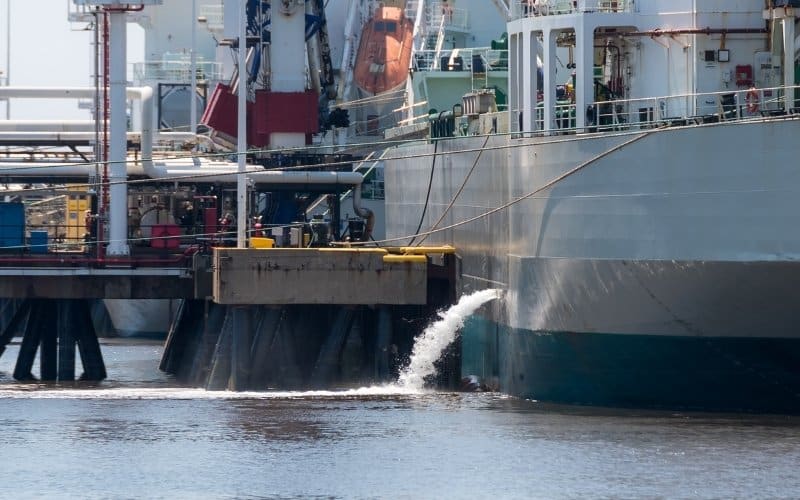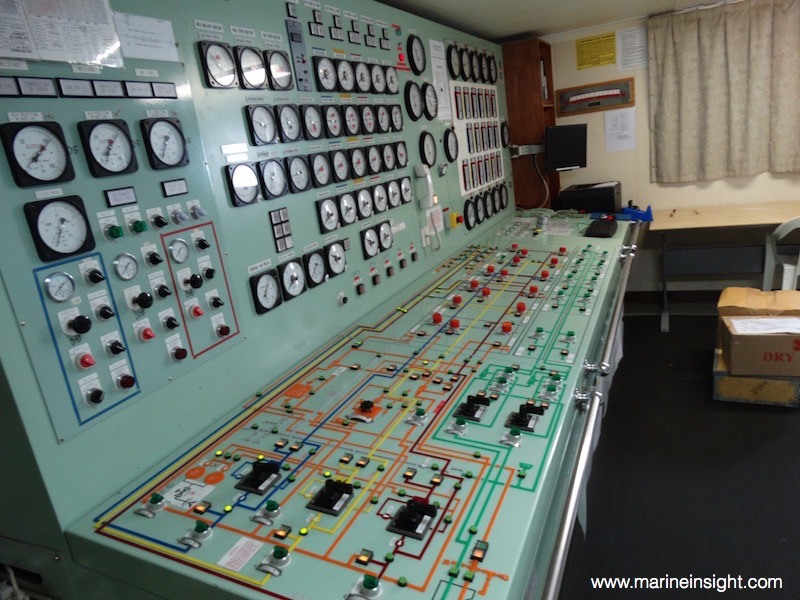

Ballasting and deballasting operations are common and quite frequent onboard ships. These operations are mainly carried out while the vessel is in port, during ballast exchange, cargo transfer and while taking heavy weather ballast.
A lot of machinery and workforce is engaged in these day-to-day operations, which require great care and attention while handling.
Therefore, it is prudent to discuss the ballasting/deballasting plan during the pre-arrival meeting or cargo work briefings.
While preparing a ballasting/deballasting plan, the critical stages with regards to ship stability, stresses and change-over of tanks should be clearly identified and discussed.
Mentioned below are a few common problems to be avoided by ship’s personnel involved in handling ballasting / deballasting operations onboard:


The officers and crew members responsible for operating the ballast pumps and valves must be fully conversant with the lineup and meaning of various “valve indications” and symbols provided on the ballast line-up diagrams in the Cargo control room and Pump room.
They should be able to differentiate between indication of manual valves, hydraulic valves, manual-hydraulic valves, suction and discharge gauges for pumps and the prime mover for ballast pumps such as steam, electricity or hydraulic pressure. This will help a lot in executing the whole operation smoothly.


Most of the ballast tank gauges work on pneumatic pressure difference method, where a measured pressure of air and difference of counter-pressure gives the level of ballast in a tank, and the reading is displayed in cargo control room through a digital or analog reading.
These gauges are to be purged regularly, and readings should be compared with manual soundings to eliminate erratic readings.
Sounding pipes are often found choked with rags or sounding rods or tapes. They must be clear at all times to get accurate manual soundings to ensure the tank is completely empty or intermediate readings are correct in case the gauges are faulty. This will prevent the dry running of ballast pumps.
During topping up ballast tanks, if the sighting ports for ballast manholes are kept open, it can help significantly if the tank reaches the overflow level in case CCR readings mismatch or are imperfect.
Before starting a deballasting operation, check alongside the berth, pier or jetty for any electrical fittings or electrically operated shore bollards.
Often vessels are found negligent in checking this, and thus eventually, the ship owners are fined heavily for the damage caused to the berth fittings due to ballast pumped out on them.
Pressure Surges
While carrying out ballasting /de-ballasting operation, the pumps in use are mostly of centrifugal type.
To start a centrifugal pump, positive suction pressure must always be kept in mind. The discharge valve of the pump can be kept upto 30% open to prevent damage to the valve body or valve seat ring.
The discharge pressures and RPMs of the pump are to be increased slowly and gradually to avoid any pressure surges in the lines and load surges in the engine room.
Often pressure surges are common causes for damaging the lines and valves. They even cause the load on the boiler or generator to fluctuate abruptly, thereby tripping the plant completely and delaying the operation as a consequence.
During changeover or brief, idle periods during operation pumps can be run in sea-to-sea mode to avoid dry running and over-heating of pump casing or further damage to the pump seal.
While taking ballast by gravity during the loaded passage, the inboard line to the tank should be opened up completely, keeping the sea chest valve closed and only then the sea chest valve should be opened.
As in the ship’s loaded condition, due to deeper draft, the seawater comes in with heavy pressure and can damage the line fittings or valves if any valve is closed in between.
While deballasting by gravity, the line from the ballast sea chest to the tank must be opened completely, keeping the tank valve closed. Once the line is fully open, then the tank valve should be opened slowly.


Care should be taken while carrying out ballast operations in areas with low under keel clearance or with a muddy bottom. They are the main reason why ballast pump strainers choke, or huge sediment deposits are found inside the tanks after deballasting such water.
These puddles of mud accumulated in tanks can be considerable if the tanks are not being inspected and cleaned to remove sediments regularly.
Open Sea Ballast Water exchange can be another effective method in removing sediments. Mud and sediments can choke the suction bellmouth inside the tank, and thus retaining excess ballast onboard can be crucial where a vessel is loading to her draft marks.
Often during ballasting, when two ballast pumps are running together if the suction lines are common, one of the pumps tends to have better suction than the other.
Especially the one with the direct suction line will have better suction than the second pump’s suction line, which is a branched one from the mainline.
This should be borne in mind and the discharge pressure of the pumps adjusted accordingly to ensure good suction to both the pumps until the tank’s water level comes down.
As the level falls further, good use of trim and list can help pumps retain suction for a longer period and thus reduce the deballasting time considerably.
However, if pump loses suction, it can be run in sea-to-sea mode for some time, and as the suction and discharge pressure builds up, the changeover of suction to the tank can be done to resume deballasting.
Related Reading: 10 Important Points To Comply With Ballast Water Convention
With regards to the ship stability, if the rate of loading is slow in any port and the vessel is deballasting by gravity at a higher rate, the ship should retain at least 1/3rd of the deadweight at all times.
Few terminals request the same in their pre-arrival checklists as well. Also, the seagoing stresses should never exceed permissible limits during any stage of such an operation.
Understanding and carrying out ballasting and de-ballasting procedures properly is of grave importance for seafarers, considering stringent environmental regulations introduced regarding the same.
Do you know any other significant issues regarding ballasting and de-ballasting processes mentioned in the article?
Let’s know in the comments below.










We believe that knowledge is power, and we’re committed to empowering our readers with the information and resources they need to succeed in the merchant navy industry.
Whether you’re looking for advice on career planning, news and analysis, or just want to connect with other aspiring merchant navy applicants, The Marine Learners is the place to be.